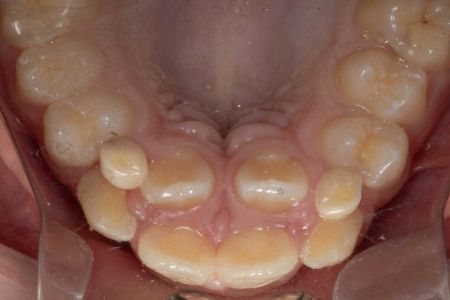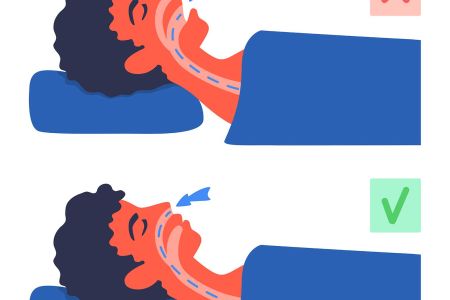Table of Contents
Are you deciding between Composite Veneers vs Porcelain Veneers?
Composite Veneers and Porcelain Veneers are increasingly popular dental procedures. A recent study in 2020 discovered a 12% increase in overall cosmetic dentistry. The most requested cosmetic dental procedures are Composite Veneers vs Porcelain Veneers.
Deciding on veneers is the initial step to improving the aesthetics and, sometimes, the functionality of your teeth. Both composite and porcelain veneers are popular as they offer instant results to improve appearance.
Composite resin is used for composite veneers, while ceramics made in a dental laboratory are used for porcelain veneers. Either option transforms smiles beautifully.
Several factors influence and determine which option is best suited for you.
Let’s evaluate the differences between the two.
What are Composite Veneers?

Composite Veneers, or composite bonding, is a noninvasive procedure made with composite resin. The technique is painless because dentists only work on the tooth’s outer enamel layer.
As a result, there is no sensitivity and minimal preparation on existing teeth. They are an excellent solution for immediate results.
Dental bonding does not require covering the entire tooth, depending on the patient’s teeth condition. Some teeth may only need a portion of the tooth reshaped with resin to achieve optimum results.
As a direct result, composite corrects minor misalignment issues.
The composite bonding material is similar to a tooth-coloured filling. Dental bonding can repair chips and fill gaps between teeth.
The process of composite veneers involves applying resin to the tooth’s surface.
The dentist then sculpts composite resin to achieve the desired shape and size of the tooth.
Our cosmetic dentists can match your natural teeth texture, shade, and transparency. If you’re planning on getting multiple veneer teeth, composite resin can be used to change the colour of your teeth to a whiter shade.
Applying composite veneers is relatively fast and can be finished in one or two visits.
Unlike ceramic teeth, composite is meticulously moulded on your teeth by a cosmetic dentist rather than a dental laboratory.
When completed, your dentist solidifies and polishes the resin to produce a more natural tooth appearance. Consequently, they are not as durable as porcelain veneers.
Composite veneers cost between $400 and $450 per tooth, but the price can vary if additional treatment is required to attain optimum results.
Advantages of Composite Veneers
- Cheaper cost than porcelain veneers
- There is no preparation and trimming for most cases, although this may differ based on the patient’s needs.
- Capable of repairing chips and filling in gaps between teeth
- Do not need to cover the entire surface of the tooth like veneers or crowns
- Easily repairable when damaged
- Possibility to be reversed
- Most patients are eligible for composite veneers
- Composite bonding is performed in-chair and completed within the same appointment.
- Protect the surface of teeth similar to fixing cavities
- Correct minor teeth alignment issues
- Fix tooth discolouration and the appearance of worn-out teeth
Cons of Composite Resin Veneers
- Can stain from smoking, eating intensely coloured foods, and drinking dark beverages
- Can chip with solid impact or from eating hard foods
- Composite often needs to be replaced after four to eight years
What are Porcelain Veneers?

Traditional veneers are contoured 0.3mm-1mm thin ceramic shells cemented over the front of your natural teeth. Furthermore, veneers overlap teeth edges, helping conceal gaps with pleasing continuity.
Similar to same-day veneers, porcelain veneers transform your existing teeth’ size, shape, and shade.
In addition, porcelain veneers are incredibly durable and last longer than composite veneers. With good maintenance and routine dental check-ups, porcelain veneers can last 1o to 15 years.
Ceramic Veneers have a better translucent natural appearance, without a doubt. Moreover, they are highly resistant to staining and chipping.
How much do porcelain veneers cost? The average cost for each veneer is between $1,200 and $1,600. However, quotes may differ for unforeseen oral conditions requiring additional dental services.
Your dentist may suggest a dental crown for a badly broken or weakened tooth. However, a dentist determines this after pre-assessment and x-rays to identify your teeth’ overall structural strength. Dental crowns are thicker and need more of the tooth structure shaven off in preparation since they cover the entire tooth.
The Process of Getting Porcelain Veneers
The procedure of getting porcelain veneers requires more dental visits.
Firstly, patients sit with our cosmetic dentist to discuss a tailored treatment plan.
Second, the process begins with preparing the teeth by trimming the surface enamel layer of your teeth to accommodate the veneer.
Shaving the enamel off the tooth should be minimal and determined by the patient’s needs and the dentist’s skill. Equally important, this process is performed under local anaesthetic, making it painless.
Thirdly, an impression mould is taken of your newly reshaped teeth and sent to a dental laboratory.
During this time, your dentist will provide temporary veneers to wear. A dental technician ceramist in a dental laboratory will digitally design and fabricate your veneers based on the impression. This process ensures precise fit and appearance.
The shade is approved at this stage by the patient alongside the dentist and completed by the technician afterwards.
Unlike offshore dental labs, fantastic Smiles uses a local Gold Coast Dental Lab, drastically reducing turnaround times and delivering excellent results.
Finally, patients return for another appointment to fit their new permanent veneers. After their temporary veneers are removed and replaced with porcelain veneers, their cosmetic dentist cements them with a special bonding agent.
Advantages of Porcelain Veneers
- Provide excellent natural-looking results.
- Unsusceptible to chips and staining, durability that is similar to a natural tooth
- The lifespan average ranges anywhere between 10 to 15 years
- No need to adjust your diet
- Correct teeth alignment issues with an even shape among adjoining veneers
- Fix tooth discolouration, shape and size of teeth. An unmatched premium option for aesthetic results.
- Desired smile goals completed in just a few appointments
Cons of Porcelain Veneers
- The amount of tooth trimming varies depending on the shape of your existing tooth.
- The initial investment is more expensive than composite veneers, although they can last two to three times longer than composite veneers.
- Can damage comparable to regular teeth with impact, clenching or grinding teeth
- They can ‘debond’, meaning come off your tooth underneath
- Repairing or replacing porcelain veneers has cost implications
- Longer completion time when compared to composite veneers
Composite Veneers vs Porcelain Veneers! What’s best for me?
In conclusion, it is best to perform due diligence and consult with your trusted dentist regarding your aesthetic goals, financial situation, and oral health.
Professional cosmetic dentists consider functional aspects with bite alignment and other pre-existing oral conditions that could affect your decision.
Nevertheless, costs contribute to everyone’s decision. Composite veneers benefit from cost-effectiveness and have a lifespan of 4-8 years. On the other hand, porcelain veneers may cost two or three times more but are less susceptible to staining and last 10-15 years.
Regardless of which smile makeover option you choose, both provide excellent cosmetic improvements to your smile! Upon speaking to one of our dentists, they may suggest combining different cosmetic dental techniques to help you attain your desired smile.









